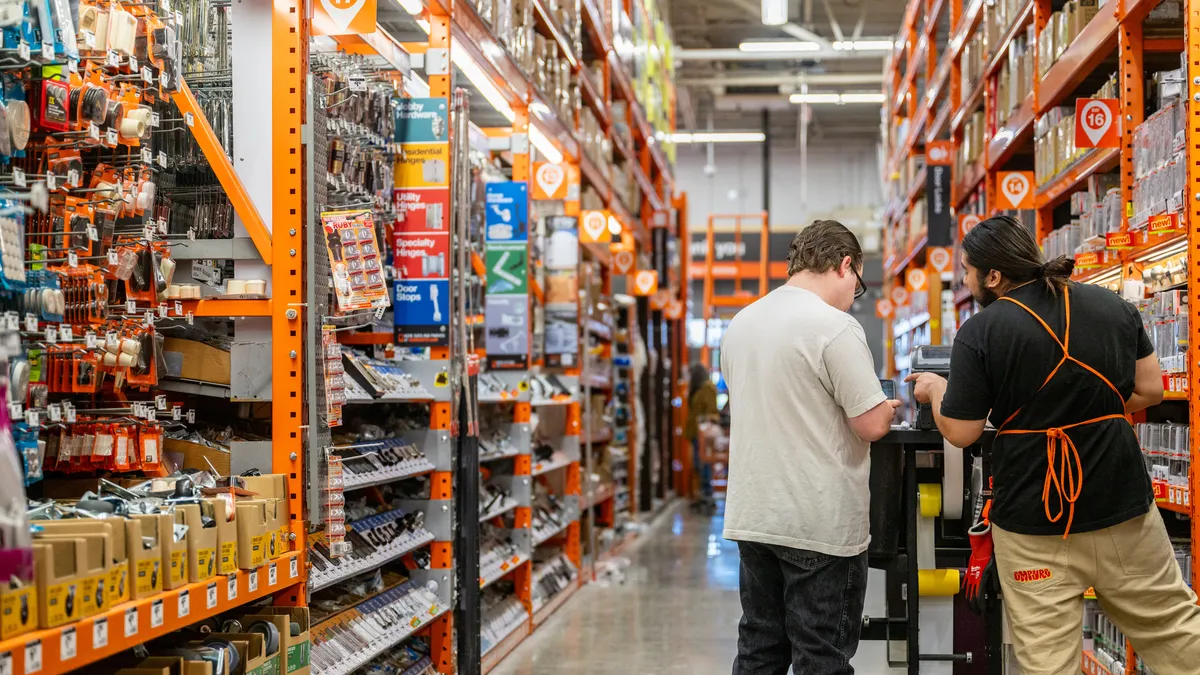Dive Brief:
- United Airlines is performing well even amid economic volatility because “we’ve won the battle for brand loyal customers,” CEO Scott Kirby said on a Wednesday Q1 2025 earnings call.
- The airline's top line revenue for the quarter increased 5.4% to a company record $13.2 billion, EVP and Chief Commercial Officer Andrew Nocella said. Loyalty revenue grew 9% to $1.5 billion.
- “It’s clear a softer macroeconomic environment is driving both volatility in the market and softer demand for travel,” Kirby said. “But for United specifically, two big picture themes have been confirmed. First, United's performance is strong even in this weak environment because we've won the battle for brand loyal customers. And second, because we've won those brand loyal customers, our earnings and financial metrics are demonstrating resilience that United's never had before.”
Dive Insight:
Building and maintaining loyalty is central to United Airlines’ strategic vision to ride out soft travel demand and economic volatility caused by global trade policies.
“When I say that there's been a structural permanent and irreversible change, what [I mean] is that United has won brand loyal customers, and they are sticky, lifelong customers … it is those gains that are allowing us to be resilient even in this weaker economic environment,” Kirby said.
United now leads other airlines in brand loyalty by a wide margin in 6 of 7 United airport hubs, Kirby said.
The airline is capitalizing on the momentum, investing in experience initiatives to keep customers coming back.
The airline is about to open a club in the Denver airport and is building new clubs in Houston and San Francisco. It is also installing what Kirby calls “the fastest Wi-Fi in the world” with Starlink on its planes. The first planes with Starlink will start flying next month, and the company plans on retrofitting the entire two cabin regional fleet by the end of the year.
The airline achieved its highest NPS scores in the first quarter and its best on-time arrival score since the pandemic.
“This weakening environment doesn't have us reconsidering these investments,” Kirby said. “In fact, we're leaning into them because they are at the center of our biggest competitive advantage: winning brand loyal customers.”
United says investing in customer experience is critical to growth even in a recessionary environment.
“And strategically, our priority is pretty simple and it hasn't changed: Win the brand loyal customers because that gives us the best margins in good times and that lead can grow even larger during lean times,” Kirby said. “The reason is that for any given customer living in any given city, if you are not the brand loyal airline, you are the spill airline.”
The only way a spill airline wins passengers is by lowering their prices, Kirby said. That works when times are good. But when times are tough, brand loyal airlines do better.
Kirby pointed to Southwest as the historical example of this strategy. Historically, Southwest had the highest percentage of brand loyal customers, an achievement Kirby credited to focusing on smaller secondary cities and not charging change or bag fees.
“At its core, that's why Southwest historically was the highest margin airline in good times and why they always outperformed by an even wider margin when times got tough,” Kirby said.
But as Southwest has rolled back those signature perks and expanded into bigger cities, the airline has lost both of those advantages and risks losing brand loyalty. That has opened up the door for other airlines.
“History is just repeating,” Kirby said. “The only thing that changed is that United is now one of the two brands leading brand loyal airlines.”











